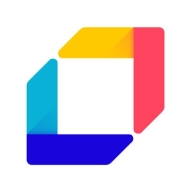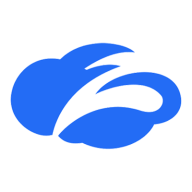


Aqua Cloud Security Platform and Zscaler Zero Trust Exchange Platform compete in the cloud security domain. While Aqua Cloud excels in affordability and customer support, Zscaler offers more comprehensive features, making it suitable for those prioritizing extensive capabilities.
Features: Aqua Cloud Security Platform offers efficient vulnerability scanning, runtime protection for containers, and seamless Docker and Kubernetes integration. Zscaler Zero Trust Exchange provides advanced DLP features, seamless VPN connectivity through Zscaler Private Access, and comprehensive security controls with SASE.
Room for Improvement: Aqua Cloud could enhance integration with more cloud services, improve robustness in non-container environments, and advance real-time patching capabilities. Zscaler can streamline its complex setup process, offer better detection capabilities, and improve latency in some regions.
Ease of Deployment and Customer Service: Aqua Cloud Security Platform ensures straightforward deployment with strong customer support, making it quick to integrate. Zscaler Zero Trust Exchange involves a more intricate setup but provides detailed customer assistance to navigate its complex deployment.
Pricing and ROI: Aqua Cloud Security Platform is cost-effective, offering a quick ROI, ideal for organizations seeking focused, efficient security solutions. In contrast, Zscaler Zero Trust Exchange has a higher initial cost, providing a greater long-term ROI through its extensive features and security offerings.



SentinelOne Singularity Cloud Security offers a streamlined approach to cloud security with intuitive operation and strong integration capabilities for heightened threat detection and remediation efficiency.
Singularity Cloud Security stands out for its real-time detection and response, effectively minimizing detection and remediation timelines. Its automated remediation integrates smoothly with third-party tools enhancing operational efficiency. The comprehensive console ensures visibility and support for forensic investigations. Seamless platform integration and robust support for innovation are notable advantages. Areas for development include improved search functionality, affordability, better firewall capabilities for remote users, stable agents, comprehensive reporting, and efficient third-party integrations. Clarity in the interface, responsive support, and real-time alerting need enhancement, with a call for more automation and customization. Better scalability and cost-effective integration without compromising capabilities are desired.
What are SentinelOne Singularity Cloud Security's standout features?SentinelOne Singularity Cloud Security is deployed in industries needing robust cloud security posture management, endpoint protection, and threat hunting. Utilized frequently across AWS and Azure, it assists in monitoring, threat detection, and maintaining compliance in diverse environments while providing real-time alerts and recommendations for proactive threat management.
Aqua Security stops cloud native attacks, preventing them before they happen and stopping them when they happen. Dedicated cloud native threat research and the most loved cloud native security open source community in the world put innovation at your fingertips so you can transform your business. Born cloud native, The Aqua Platform is the most integrated Cloud Native Application Protection Platform (CNAPP), securing from day one and protecting in real-time. Aqua has been stopping real cloud native attacks on hundreds of thousands of production nodes across the world since 2015.
Aqua Security Features
Aqua Security has many valuable key features. Some of the most useful ones include:
Aqua Security Benefits
There are many benefits to implementing Aqua Security. Some of the biggest advantages the solution offers include:
Reviews from Real Users
Lizeth Z., Cloud Security Specialist at Telstra, says, “Aqua Security is the most advanced solution in the market for container security. Aqua Security allows us to check for vulnerabilities in the CI/CD pipeline, so application teams can remediate issues before going into production. Aqua Security helps us to check the vulnerability of image assurance and check for malware.”
Zscaler Zero Trust Exchange Platform acts as a VPN alternative for secure remote access, cloud protection, and zero-trust strategies. It enables secure data transmission, supports remote work, and enhances compliance through a cloud-based architecture, offering improved performance and simplified management.
Designed for organizations seeking secure application access and robust data protection, Zscaler Zero Trust Exchange Platform delivers a comprehensive solution through seamless VPN connectivity, data loss prevention, and SSL inspection. Its cloud integration ensures scalability and reliability, while its interface provides intuitive management. Companies benefit from automatic secure access, minimizing constant authentication needs, and safeguarding sensitive data. The platform allows easy deployment and integration with diverse identity providers, granting granular control for access and application segmentation. Despite powerful capabilities, enhancements are needed in speed, bandwidth, and legacy support, with users noting interface and configuration challenges.
What are the key features of Zscaler Zero Trust Exchange Platform?In specific industries, Zscaler Zero Trust Exchange has been implemented to enhance security protocols in fields like finance and healthcare. By prioritizing data protection and compliance, it assists companies in safely managing sensitive information and meeting regulatory requirements. Organizations leverage its features to ensure secure operations across remote and cloud environments, adapting to industry-specific needs with customizable access and security controls.
We monitor all Cloud-Native Application Protection Platforms (CNAPP) reviews to prevent fraudulent reviews and keep review quality high. We do not post reviews by company employees or direct competitors. We validate each review for authenticity via cross-reference with LinkedIn, and personal follow-up with the reviewer when necessary.